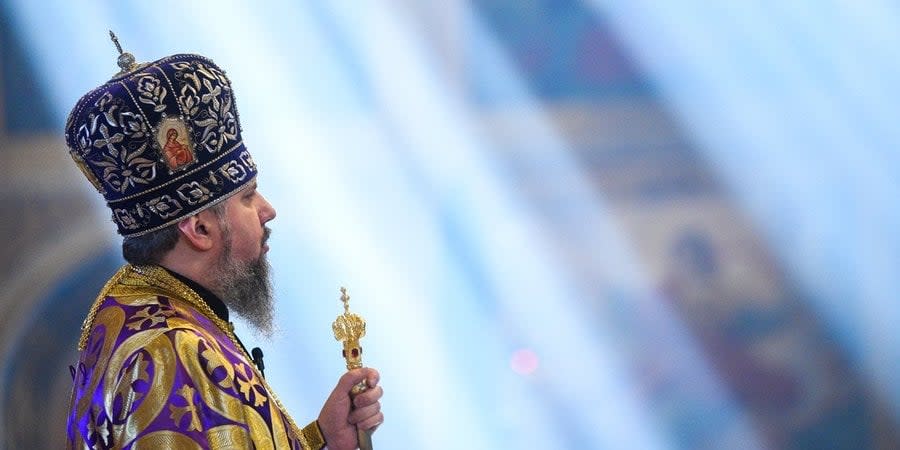Why Ukraine's Catholic and Orthodox churches celebrate Easter after Western Catholic and Protestant churches

The Orthodox Church of Ukraine (OCU) and the Ukrainian Greek Catholic Church (UGCC) celebrates Easter on May 5 — that is, at the same time as the majority of Orthodox churches around the world.
However, Western Catholic and Protestant churches have already celebrated Easter a month before – on March 31.
Christmas together with Catholics, and Easter separately: why?
The OCU and the UGCC switched to the Revised Julian church calendar on Sept. 1, 2023, when the new church year began, moving the dates of most holidays 13 days back - that is why the OCU and the UGCC officially celebrated Christmas on December 25 in 2023, together with the Catholic world.
Western Rite Christians (the Roman Catholic Church, Protestants, as well as a number of Eastern Catholic and Oriental Orthodox churches) use the Gregorian calendar, not the Revised Julian one.
The difference between them lies, in particular, in how the dates of the so-called "moving" church holidays, which include Easter, are determined.
The Julian (individual Oriental Orthodox churches, in particular the Russian Orthodox Church) and the Revised Julian (the "new" calendar of the OCU and UGCC) calendars use the so-called "old" or "eternal" computus (Latin for computation. - ed.) - that is, the calculation of the date of Easter. This technique was defined as early as 325 at the First Council of Nicaea where it was declared that Easter should be celebrated on the first Sunday after the first full moon following the vernal equinox. This principle covered the entire Christian world, because it was approved before the division of the Christian Church into Catholic and Orthodox in 1054.
This principle defines several requirements that the date of Easter must meet:
no earlier than March 21 (the fixed day of the vernal equinox)
no earlier than the first full moon (full moon) after the equinox
celebrated on the first Sunday after the full moon
not before the Jewish holiday Pesach (or Passover), which, as Christians believe, coincides with the crucifixion of Jesus (so the day of his Resurrection cannot be before Pesach) — this rule appeared after First Council of Nicaea.
Thus, Easter, according to the Julian calculation, can only fall in the period between the modern April 4 and May 8 (this is the interval between March 22 and April 25, according to the old Julian calendar).
Read also: What colors should you avoid when painting your Ukrainian Easter eggs?
In accordance with the computus, Orthodox Easter was calculated to fall on May 5, 2024. This is due to the lunar Julian calendar, which skips over a month if the computus provides a date that falls before April 3.
This computus was originally used in the ancient city of Alexandria in Egypt – one of the centers of Orthodox Christianity, which is why this method is used by the Orthodox Church of Ukraine, the Eastern Orthodox Church; Bulgarian, Greco-Byzantine, Russian, Romanian Orthodox Churches and Ukrainian Greek Catholic Churche, Jerusalem Armenian Patriarchate, Eritrean and Ethiopian Eastern Catholic Churches, Ethiopian, Eritrean, Coptic, Syriac Oriental Orthodox Churches, and the Ancient Church of the East.
When the OCU and the UGCC switched from the Julian to the REvised Julian calendar, they separately noted that they were making this transition to the new calendar "with the preservation of the traditional Easter."
That is why OCU and UGCC will continue to celebrate all the ‘Easter’ holidays together with the rest of Orthodox Christianity, and not with the Catholic world. This applies not only to Easter, but also holidays dependent on its date (such as Ascension and Pentecost, that is, church holidays on the 40th and 50th days following the Christian resurrection of Christ).
The Gregorian calendar uses calculations that are more accurate from an astronomical point of view. The difference between the solar calendars according to the Julian and Gregorian calendars is now 13 days (in the 20th and 21st centuries).
The first full moon fell on March 25 in 2024, the equinox on March 20, so Easter was celebrated on March 31, based on Gregorian calendar.
Taking into account the requirements of Gregorian calendar, Easter in 45% of cases is celebrated a week earlier than in churches using the Julian calendar. Easter dates coincide in 30% of cases, in 5% of cases the difference is 4 weeks, and in 20% - a difference of 5 weeks. However, a 2-3 week difference between Catholic and Orthodox Easter cannot occur.
The UGCC already assumes that over the years they can synchronize the celebration of Easter with Western Catholic churches, according to Metropolitan Ihor Wozniak of the UGCC.
"We will celebrate Easter on April 20 together with the Roman Catholics [due to the coincidence of the dates of Great Day for Western and Eastern Christians] next year [2025], and probably from now on we will have joint celebrations of all major holidays," he said in Feb. 2024.
We’re bringing the voice of Ukraine to the world. Support us with a one-time donation, or become a Patron!
Read the original article on The New Voice of Ukraine


